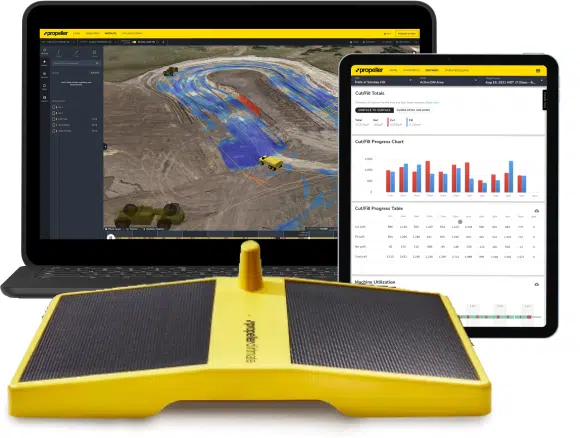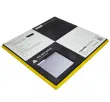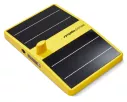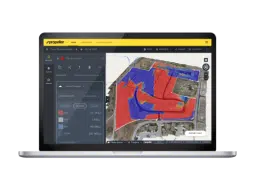Drones & Ground Control
Just like traditional surveying requires a base and rover, drone surveying requires a drone and ground control. But what does that mean exactly? We’ve got the answers for you.
Drone Surveying Software
Transforming your drone survey from millions of images and data points to a super cool 3D map of your worksite and a reliable single source of truth for the lifecycle of your project.
- 120 acre site / 5 acres per hour = 24 hours
- 24 hours x $100 per hour = $2400 per survey
- 120 acre site / 100 acres per hour = 1.2 hours
- 1.2 hours x $100 per hour = $120 per survey
Variances
Cost per cubic yard moved is very unique to your business. For this exercise, we’ll take an average number of $5.00 per cubic yard moved.
On average you can see a 5% quantity variance in quantities moved with traditional surveying methods. Drone surveys, however, are more dense, which means they are capable of identifying more quantity through a number of data points, thereby lowering the variance.
Now, let’s take a look at the cost associated with a 5% variance with traditional surveying, compared with a 3% or 1% variance when using drone surveying.
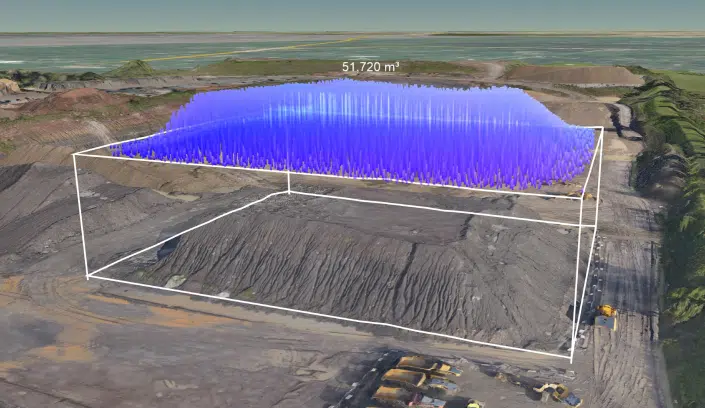
- Capture the initial state of a project before breaking ground
- Reduce downtime
- Improve scheduling
- Gain a competitive edge in the selection process
- Capture changes as they happen
- See what’s been done and what’s left to do
- Identify and address issues
- Perform quick volume calculations of material moved
- Interactive 3D maps
- Unlimited users using a single source of truth for your worksite
- Generate PDF or CSV files
- Add-on Crew for simple office to field communication (and back)
“Prior to Propeller, we were acting on information that was already weeks out of date. Now, we’re ahead of the curve and can make decisions based on actual facts, not assumptions.”
- Capture changes as they occur
- Inspect and measure pit angles
- Track earth movement
- See what’s been done and what’s left to do
- Calculate stockpile volumes
- Translate stockpile volumes to $$
- Instantly share reports
- Easy end-of-month reconciliation and financial forecasting
- Interactive 3D maps
- Unlimited users using a single source of truth for your worksite
- Generate PDF or CSV files
- Add-on Crew for simple office to field communication (and back)
“We proved within those first couple months the value of the data we were getting out of the stockpiles. It didn’t even make sense to anybody that you could get this much data, this quickly, with this much accuracy.”
- Verifiable accuracy to 1/10 ft
- Improve worker safety
- Generate 3D and 2D maps of quarry
- Survey more ground in a fraction of the time
- Capture changes as they occur
- Inspect and measure pit angles
- Track earth movement
- See what’s been done and what’s left to do
- Calculate stockpile volumes
- Translate stockpile volumes to $$
- Instantly share reports
- Easy end-of-month reconciliation and financial forecasting
“We have streamlined the measurement process for stockpiles. Before, the calculations were made in another software. This process was both costly and time consuming. We now scan several times a year and measure directly in Propeller.”
- Verifiable accuracy to 1/10 ft
- Improve worker safety
- Generate 3D and 2D maps of quarry
- Survey more ground in a fraction of the time
- Get accurate calculations of compaction densities
- Monitor remaining airspace
- Detect liner breaches
- Detect liner breaches
- Interactive 3D maps
- Unlimited users using a single source of truth for your worksite
- Generate PDF or CSV files
- Add-on Crew for simple office to field communication (and back)
“If we needed to know right now how much airspace we have left, it’d be no problem for me to go outside, fire up the drone, fly it really quickly, and have the answer back in less than a day.”
Drone surveying is no longer a “futuristic” idea for earthworks. It has risen sharply in popularity over the last several years in a wide range of earthworks businesses, large and small.
At Propeller, we believe that everyone should have reliable, easy access to accurate site information, complete with interactive 3D maps. What once may have seemed out of reach, is now fully accessible—anytime, anywhere.
You’ve made it this far, what have you got to lose by checking out a demo and seeing if drone surveying with Propeller fits your business and your team? (hint: nothing)
